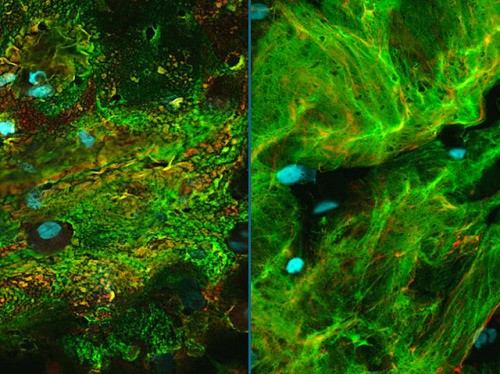
Flaking Off
A genetic disease developing early in childhood, cystic fibrosis (CF) is characterised by the build-up of thick mucus, bacterial infections and structural damage in the lungs. While some theories suggest an initial infection triggers the onset of other symptoms, a recent study monitoring young CF patients found that the accumulation of mucus in the lungs was the first major sign of the disease. Examining fluids washed through sections of their lungs, a technique known as bronchoalveolar lavage, consistently revealed more mucins, the key proteins in mucus, and more solid mucus flakes compared to healthy children, even when no other symptoms were visible. Their mucus flakes (pictured, left) also had a different appearance under the microscope, denser and more granular than those from healthy lungs (right). With mucus so central to the early stages of CF, the researchers suggest that developing safe mucus-thinning drugs may help slow disease progression in young patients.
Written by Emmanuelle Briolat
- Image from the Camille Ehre Lab, UNC School of Medicine
- Marsico Lung Institute, University of North Carolina at Chapel Hill, NC, USA
- Image copyright held by the original authors
- Research published in Science Translational Medicine, April 2019
You can also follow BPoD on Instagram, Twitter and Facebook
Archive link





Комментариев нет:
Отправить комментарий